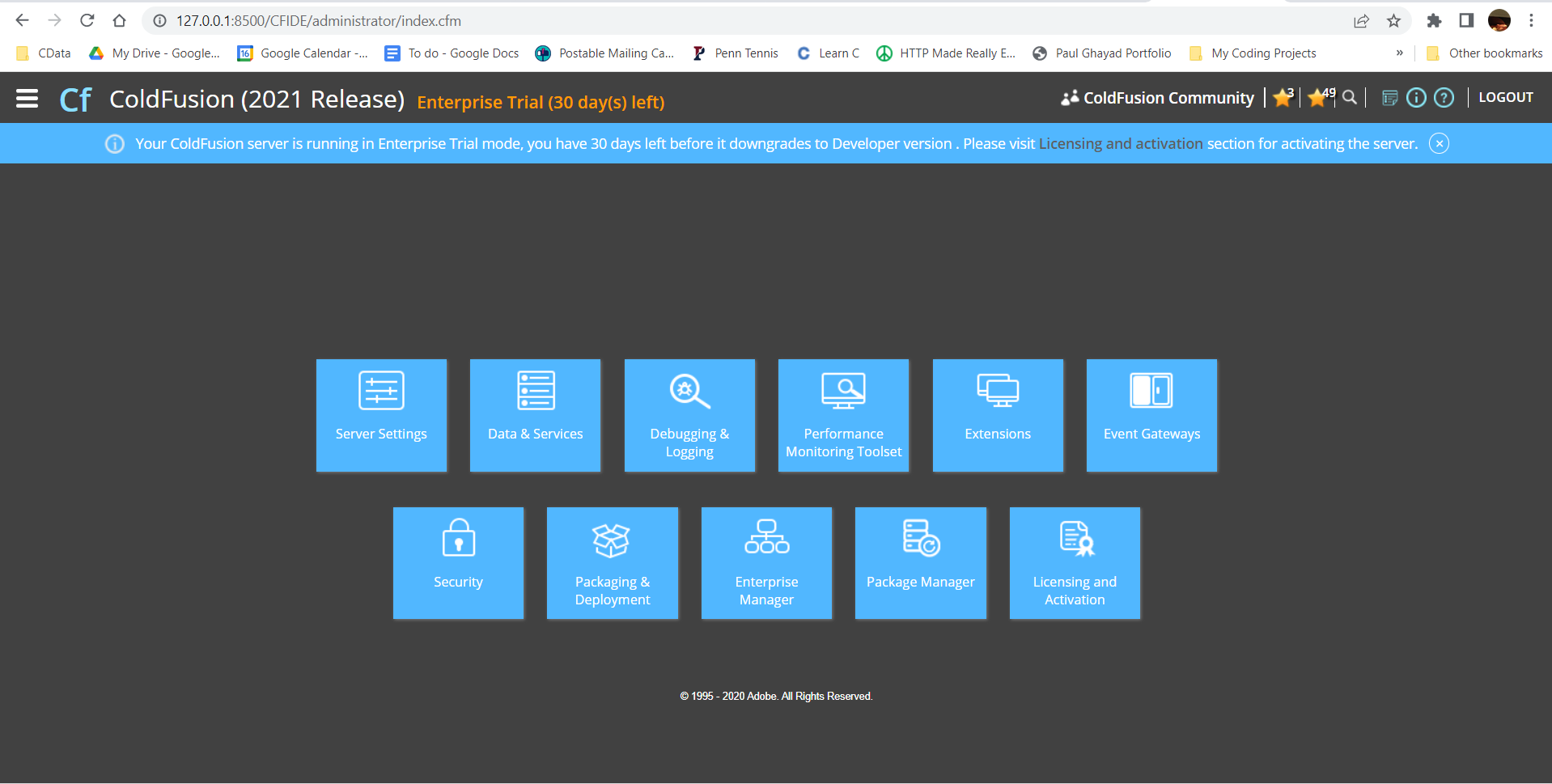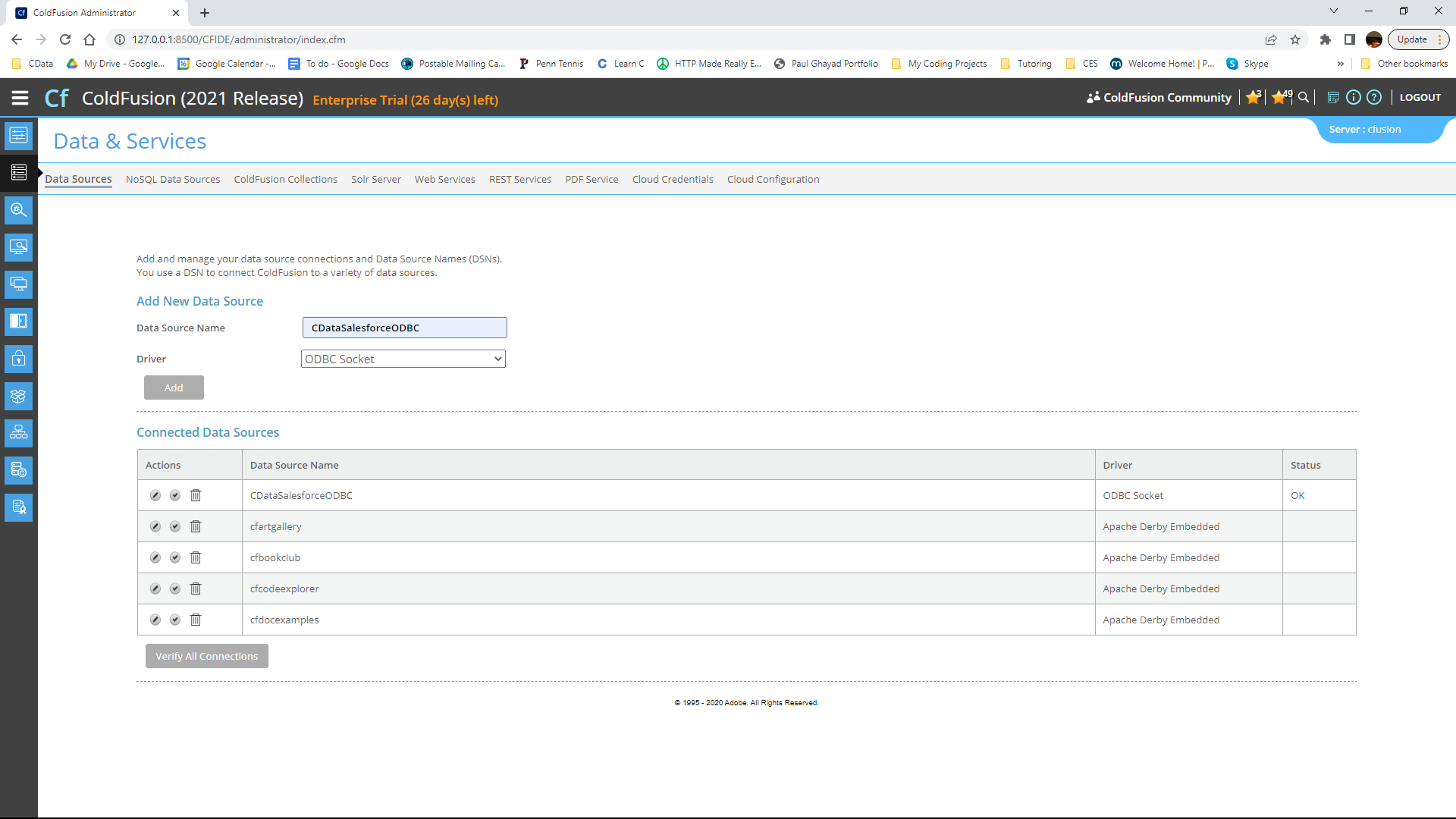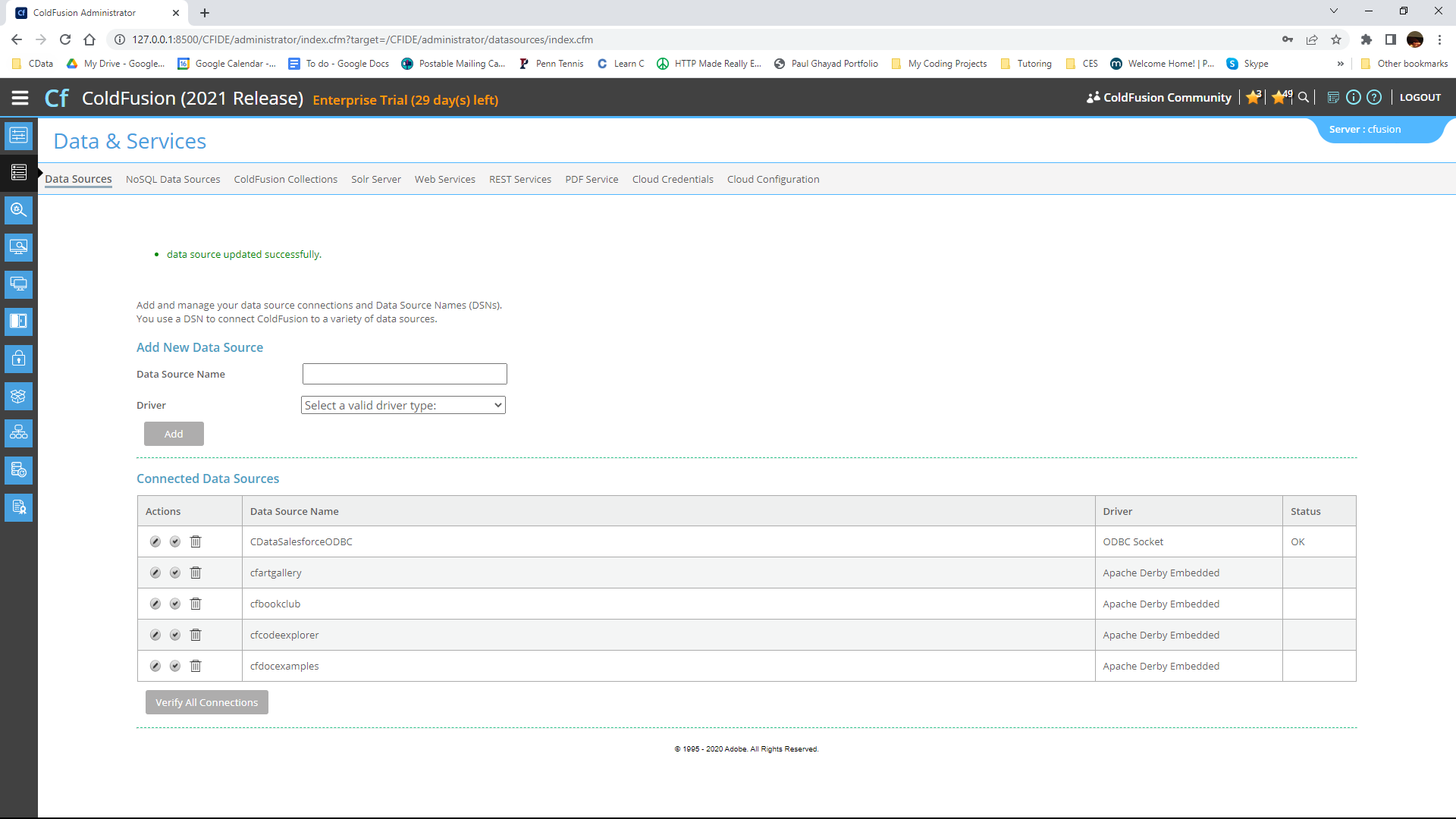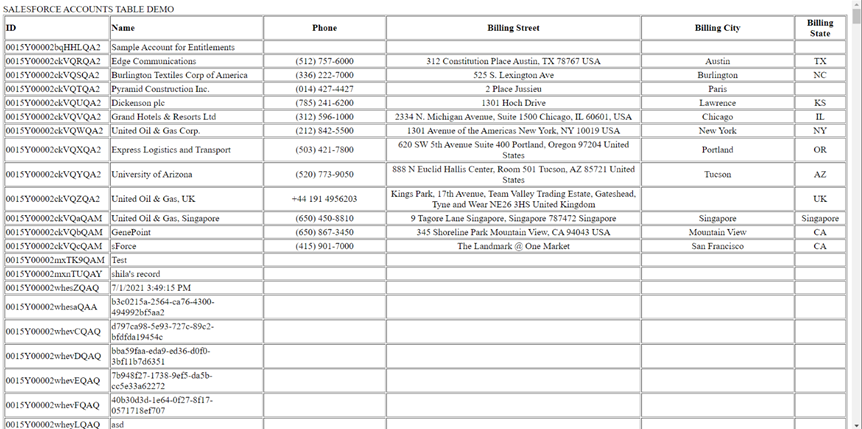Discover how a bimodal integration strategy can address the major data management challenges facing your organization today.
Get the Report →Import Real-Time SAP SuccessFactors Data in ColdFusion to Build Applications
Use CData ODBC drivers to import and use SAP SuccessFactors data in ColdFusion.
Adobe ColdFusion is a web and mobile application development platform. It uses its own scripting language, ColdFusion Markup Language (CFML), to create data-driven websites as well as generate remote services, such as REST. When ColdFusion is paired with the CData ODBC Driver for SAP SuccessFactors, you can link your ColdFusion web and mobile applications to operational SAP SuccessFactors data. This allows for your applications to be more robust and complete. This article details how to use the ODBC driver to create a table populated with SAP SuccessFactors data from within a ColdFusion markup file.
To follow along with this tutorial, you need to install the CData ODBC Driver for SAP SuccessFactors and Adobe ColdFusion.
Configuring the Connection
If you have not already, first specify connection properties in an ODBC DSN (Data Source Name). This is the last step of the driver installation process. You can use the Microsoft ODBC Data Source Administrator to create and configure ODBC DSNs.
You can authenticate to SAP Success Factors using Basic authentication or OAuth with SAML assertion.
Basic Authentication
You must provide values for the following properties to successfully authenticate to SAP Success Factors. Note that the provider will reuse the session opened by SAP Success Factors using cookies. Which means that your credentials will be used only on the first request to open the session. After that, cookies returned from SAP Success Factors will be used for authentication.
- Url: set this to the URL of the server hosting Success Factors. Some of the servers are listed in the SAP support documentation (external link).
- User: set this to the username of your account.
- Password: set this to the password of your account.
- CompanyId: set this to the unique identifier of your company.
OAuth Authentication
You must provide values for the following properties, which will be used to get the access token.
- Url: set this to the URL of the server hosting Success Factors. Some of the servers are listed in the SAP support documentation (external link).
- User: set this to the username of your account.
- CompanyId: set this to the unique identifier of your company.
- OAuthClientId: set this to the API Key that was generated in API Center.
- OAuthClientSecret: the X.509 private key used to sign SAML assertion. The private key can be found in the certificate you downloaded in Registering your OAuth Client Application.
- InitiateOAuth: set this to GETANDREFRESH.
Adding a Data Source and Creating a Table
After creating a DSN, follow the steps below to add a new data source, test our connection to it, create a ColdFusion markup file, and, finally, import SAP SuccessFactors SAP SuccessFactors data and display it in a table in ColdFusion:
-
From the ColdFusion administrator interface, choose Data & Services.
![Selecting Data & Services]()
-
Here, click "Add New Data Source". The data source name can be any name, provided it conforms to the ColdFusion
variable naming conventions. For our ODBC driver, choose "ODBC Socket", then click the "Add" button.
![Adding Data Source Name]()
-
From the ODBC DSN Dropdown menu select CData SAP SuccessFactors Sys. Under the Advanced Settings section, leave the
Connection String blank. Note that any properties specified in this input field will override the ones specified in the
DSN Configuration.
![Populating driver properties]()
-
Now, test the connection by pressing the check mark to the left of the CDataSAP SuccessFactorsODBC data source you just created.
When the data source reports an "OK" status, it is ready for use.
![Testing the connection]()
-
Next, create a new ColdFusion Markup file (.cfm) and place it in the wwwroot directory ("C:\ColdFusion2021\cfusion\wwwroot")
for ColdFusion.
The following code queries the data source:
<cfquery name="SAP SuccessFactorsQuery" dataSource="CDataSAP SuccessFactorsODBC"> SELECT * FROM ExtAddressInfo </cfquery>And a CFTable can be used to quickly output the table in HTML:<cftable query = "SAP SuccessFactorsQuery" border = "1" colHeaders colSpacing = "2" headerLines = "2" HTMLTable maxRows = "500" startRow = "1"> <cfcol header="<b>address1</b>" align="Left" width=2 text="address1"/> <cfcol header="<b>zipCode</b>" align="Left" width=15 text="zipCode"/> ... </cftable>Full code, including the HTML portion is available below:<html> <head><title>CData Software | SAP SuccessFactors ExtAddressInfo Table Demo </title></head> <body> <cfoutput>#ucase("SAP SuccessFactors ExtAddressInfo Table Demo")#</cfoutput> <cfquery name="SAP SuccessFactorsQuery" dataSource="CDataSAP SuccessFactorsODBC"> SELECT * FROM ExtAddressInfo </cfquery> <cftable query = "SAP SuccessFactorsQuery" border = "1" colHeaders colSpacing = "2" headerLines = "2" HTMLTable maxRows = "500" startRow = "1"> <cfcol header="<b>address1</b>" align="Left" width=2 text="address1"/> <cfcol header="<b>zipCode</b>" align="Left" width=15 text="zipCode"/> ... </cftable> </body> </html> -
Finally, run the code in a browser. It produces a table populated with SAP SuccessFactors data!
![Running the code]()
As a note, the CData ODBC Drivers also support parameterized queries using the cfqueryparam element.
For example:
SELECT * FROM Account WHERE name =
Get Started Today
Download a free, 30-day trial of the CData ODBC Driver for SAP SuccessFactors and start building SAP SuccessFactors-connected applications with Adobe ColdFusion. Reach out to our Support Team if you have any questions.











